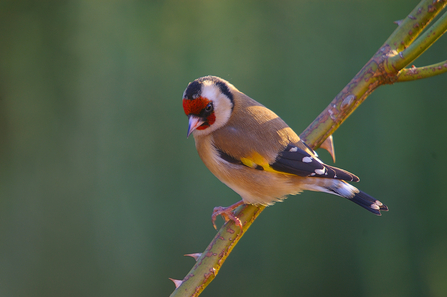You’ve reported all manner of birds across South Derbyshire over the last two weeks. We’ll start with one of the largest reported, the grey heron, which has a wingspan of 1.8 m and nest in colonies called Heronries. A smaller feathered fisher, whose wings span 1.5 m and is often seen with them spread out in the sun to dry, the cormorant was also spotted.
Sightings Blog - 2022 Blog #3
Cormorant by Derek Moore
A range of birds you’re more likely to see in your garden were also seen, including the blue tit and long-tailed tit which both hunt woodland spiders and insects as well as frequenting bird tables. The fiercely, territorial robin was spotted too as well as the blackbird, who’s UK population is made up of a mixture of year-round residents and winter visitors from Scandinavia and the Baltics. Also recorded were song thrushes, who have a unique behaviour of cracking snails’ shells against a stone to break them to get at the snail inside. A few more sociable species, the house sparrow and the magpie, were also seen along with a dunnock, also known as the 'hedge sparrow'. The most common breeding bird in the UK with is easily recognised cocked tail, the wren, was spotted too and as well as two species of finch, the greenfinch and goldfinch, the latter of which during the winter can form flocks of up to 100 of this easily recognisable birds.

©Neil Aldridge
But where there are small birds, there are predators, so its not surprising a sparrowhawk was recorded, the males can be between a blackbird and a collared dove in size whilst the much larger females can be the same size as a large pigeon.
We are looking forward to reading about your wildlife sightings across Derbyshire. To submit your own sighting and be featured in a future blog go to www.derbyshirewildlifetrust.org.uk/wildlife/record-sighting.
Thank you to Jennifer Vaudin, Jim Dutton, Louise Baker, Lily Pritchard, Susan Gay and Hannah Bale for submitting their wildlife sightings.
